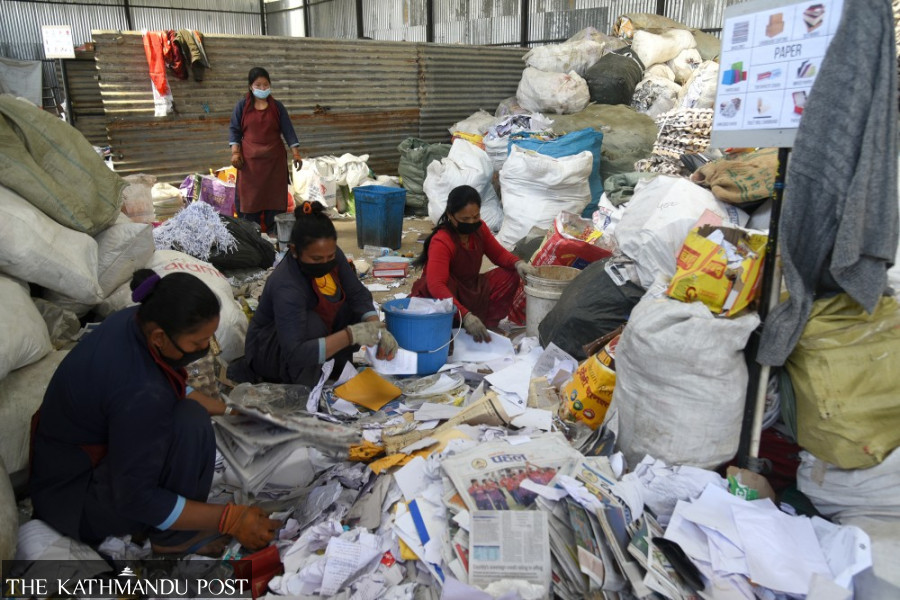Health
KMC to expand waste segregation to ward number 5 and 12
The city office has started segregating degradable and non-degradable from ward 27. Degradable waste is also being used to produce biogas.
Post Report
Residents from Wards 5 and 12 of the Kathmandu Metropolitan City have to segregate degradable and nondegradable waste materials, as the city office has decided to collect only the segregated waste materials from those wards.
The metropolis’s Environment Department, which started collecting only the segregated waste materials from ward 27 a month ago, has planned to enforce the measure in all wards ultimately.
“We have arranged five additional garbage trucks to collect segregated waste materials,” said Rabinman Shrestha, chief of the department. “We will enforce waste segregation rules in wards 12 and 5 soon.”
The metropolis had started collecting segregated wastes from ward 27 around a month ago. Officials said that degradable waste materials are being turned into compost at the KMC’s waste transfer station. They said that the metropolis has been also using reagents to expedite the process of making compost.
Officials hoped that the compost would be ready in two months.
Along with making compost out of discarded household waste, the metropolis has been also using degradable waste to fill in the bio-methanation plant, which was provided by the European Union.
Shrestha said that waste materials filled in a tank of biogas have just started to produce gas, which is being filled in biogas balloons. Once the gas is filled in biogas balloons, it can be used in cooking and generating electricity.
The KMC facility can generate 15 kilowatts of electricity from biogas.
Making compost from discarded waste material and generating biogas and electricity are among the measures the metropolis is working on to lessen the quantity of waste materials.
Officials said they have been working to segregate degradable and non-degradable waste materials in various places in the city.
The 32 wards of the metropolis will be divided into eight sectors and the waste materials will be segregated in the respective blocks. The metropolis has also deployed 300 cleaning staff—150 men and 150 women—to collect waste discarded at public places, including roadsides and riverbanks.
According to officials at the Environment Department of the KMC, an excavator is being used to clean the Bishnumati River. The department has started the river clean-up drive from the New Buspark area.
Officials said that the excavator will extract the waste from the riverside before it is sent to a landfill.
Waste segregation at the source was one of the measures Mayor Balendra Shah touted as a solution to Kathmandu’s chronic garbage problem. After he assumed office, Shah asked city residents to start segregating waste at the source. They started doing so, using separate bins in their homes. But the plan didn’t work, largely due to a lack of preparation on the KMC’s part.
The Kathmandu Valley generates over 1,200 tonnes of solid waste every day, nearly 60 percent of which comes from the KMC alone. Experts say 60 percent of organic waste originating in the Valley can be converted into compost and the remaining 30 percent of non-degradable waste can be recycled.




 16.12°C Kathmandu
16.12°C Kathmandu













